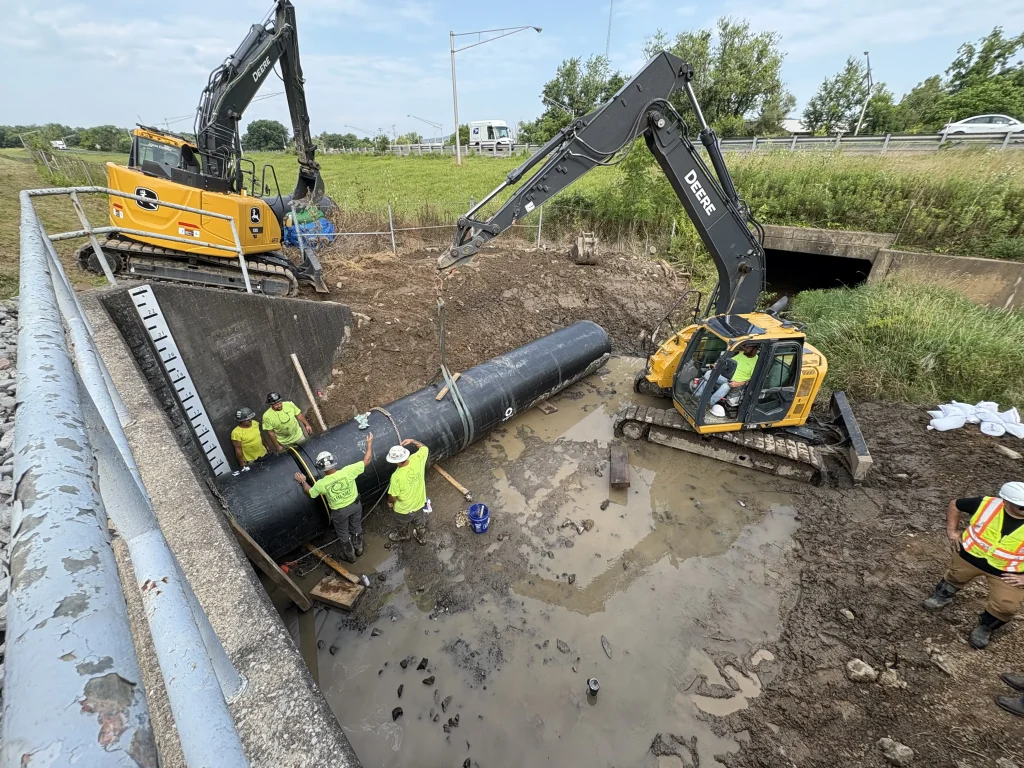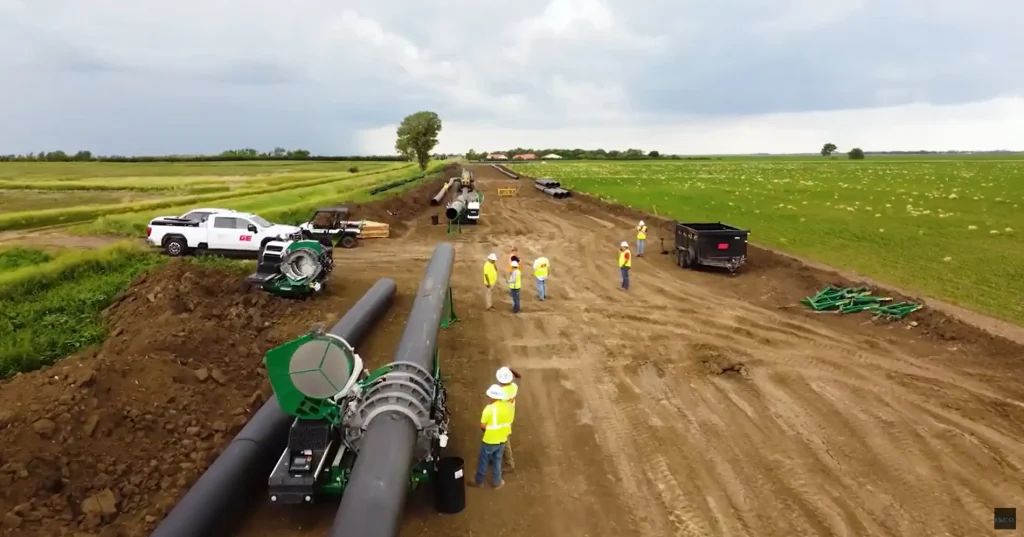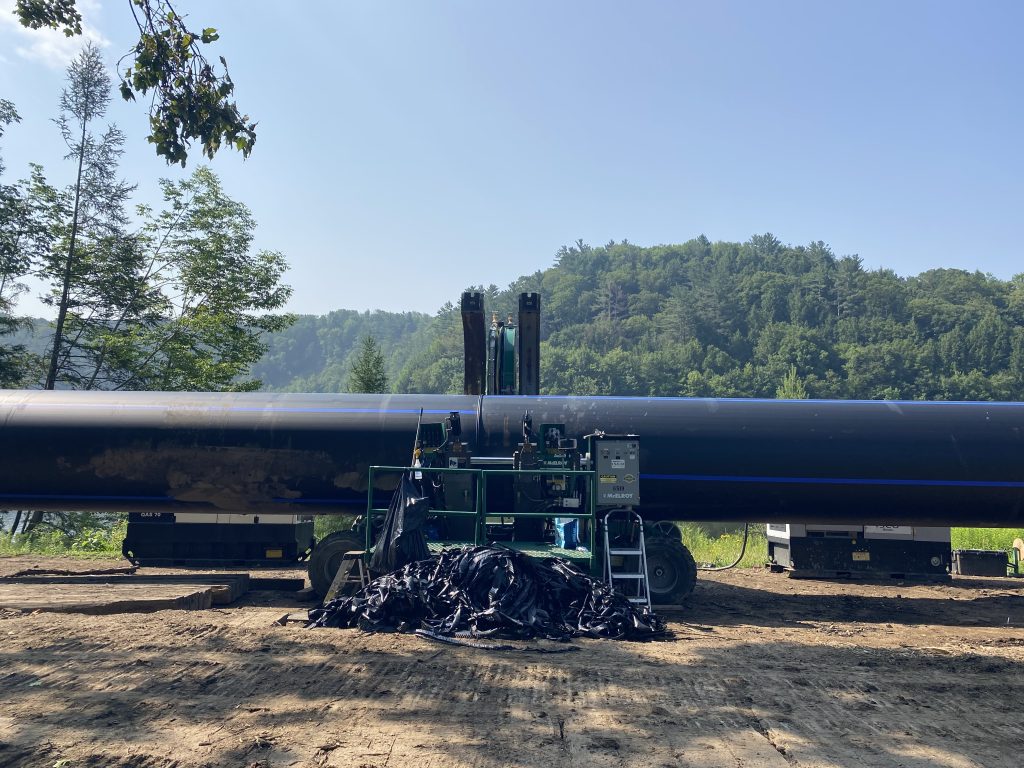Resources
Field Reports
New Pipe Technology Helps Fish and Aquatic Life Swim Upstream
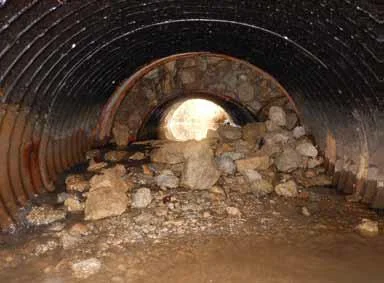
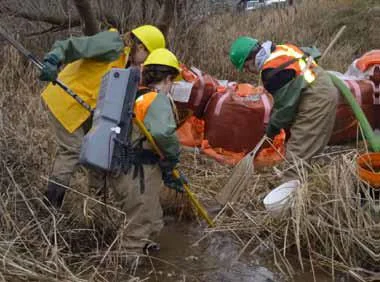
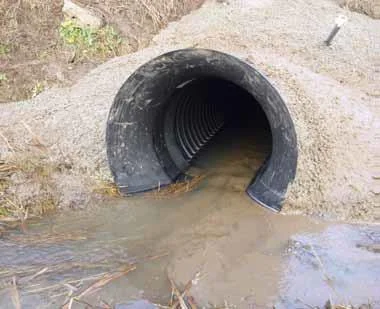
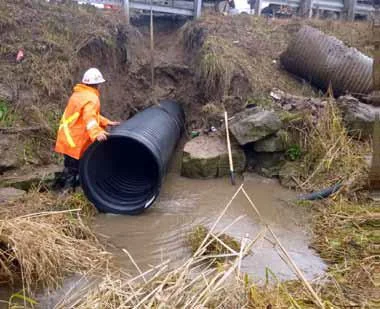
The Problem
In the Canadian town of Milton, Ontario in Halton Region, an existing corrugated steel pipe (CSP) culvert was damaged. The CSP was located underneath Steeles Avenue and adjacent to railway tracks, approximately four meters deep. Steeles Avenue was starting to collapse at the shoulder where the 1,070 mm CSP separated and failed. As a result, a small sink hole opened up and grew larger due to the failure.
As CSP pipes age they become weaker and eventually lose their shape, especially as the backfill is undermined. In addition, CSP pipes put in the ground are joined by external bands. Generally the gauge or thickness of the material can be as much as half the thickness of the pipe itself, resulting in the joint being the weakest part, causing it to fail first.
The CSP had to be quickly repaired. There were two objectives to repairing the failing pipe. First, as the culvert was used by various fish species as a passageway in the stream, a repaired pipe had to slow down the water’s velocity through the pipe to ensure that the fish could still easily pass through. Second, during a storm event, the water needed to move efficiently through the repaired culvert to prevent flooding.
The Solution
Snap-Tite representative Brian Zagrodny and Snap-Tite distributor Andrew Bird of ST Pipe Sales Ltd. Worked with Provincial Underground Services Ltd. to pinpoint the best pipe repair solution to address the unique fish passage and flow requirements. After a site visit and meeting with Halton Region and the Halton Region Conservation Authority, it was determined that using a 750 mm diameter interior open profile (IOP) high-density polyethylene (HDPE) pipe in five meter lengths was the best choice to line the old culvert.
The IOP pipe is an engineered pipe solution with a corrugated interior, or rough elements, designed to slow down water velocity to make it easier for fish to pass.
In addition, due to concerns over the potential impacts of significant water streams after a storm event and local upstream flooding, the Halton Region also opted to install a Hydro-Bell on the upstream side of the culvert. The Hydro-Bell is an inlet modification device that improves entrance loss to increase the hydraulic capacity in storm events.
The Installation
This was a first time an installation of this kind took place in Canada – that is, the first time an IOP pipe was installed together with the Hydro-Bell inlet modification device.
Prior to lining the culvert, a team of fish extraction specialists from the Halton Conservation Authority arrived on site. The construction work zone was first isolated to rescue and relocate all the fish. The specialists successfully relocated seven blacknose dace, three creek chub and one rainbow trout. Then the work zone was dewatered for the culvert lining installation to take place.
Provincial Underground Services Ltd. Repaired the old CSP pipe by sliplining the new IOP pipe inside the old pipe. The IOP pipe was delivered in five meter sections with bell and spigot ends with gaskets providing leak-free joints. The Hydro-Bell was fused on to the end of one of the sections of IOP pipe, prior to being delivered to the jobsite. Finally, any annular space between the CSP and the IOP pipe was filled in with grout.
Conclusion
The IOP pipe and Hydro-Bell was a custom solution to a lining installation that addressed the concerns of both agencies, Halton Region and Halton Region Conservation Authority. First, the IOP pipe helped slow down water flow for fish passage, allowing the fish to swim upstream. Second, the Hydro-Bell helped increase flow capacity through the culvert in case of a storm event to prevent flooding.
